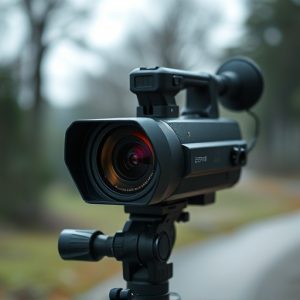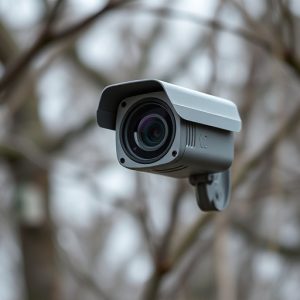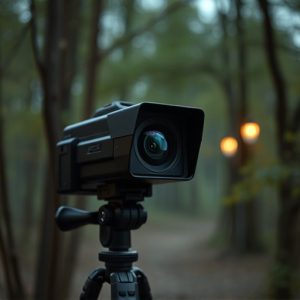Hidden Camera Placement & Detection in Childcare: Batteries, Strategies, and Ethics
Battery-operated hidden childcare cameras offer parents a crucial tool for monitoring their children…….
Battery-operated hidden childcare cameras offer parents a crucial tool for monitoring their children's safety in daycare centers or babysitters' homes, providing peace of mind and ensuring a secure environment. Strategically placed, these cameras capture interactions in high-risk areas like playrooms and nap corners, aiding in the detection of concerning behaviors. However, they must be used ethically with consent and transparency, adhering to local laws, to balance safety with privacy concerns while fostering trust between providers and parents.
Uncover the intricate world of covert recording equipment placement and detection with our comprehensive guide. From a parent’s perspective, explore the rise of battery-operated hidden cameras in childcare settings, delving into effective placement strategies designed to ensure safety. Learn cutting-edge techniques and technologies for detecting these devices while navigating legal considerations and ethical dilemmas surrounding their use. Discover crucial insights to stay informed in today’s digital landscape.
- Understanding Covert Recording Equipment: A Parent's Perspective
- Battery Operated Hidden Cameras: Placement Strategies for Childcare Settings
- Detecting Covert Surveillance: Techniques and Technologies
- Legal Considerations and Ethical Dilemmas in Using Hidden Cameras
Understanding Covert Recording Equipment: A Parent's Perspective
As a parent, ensuring your child’s safety and well-being while they’re in childcare is paramount. However, with the advent of sophisticated technology, it’s important to be aware of covert recording equipment that might be present. Battery-operated hidden childcare cameras are small, unassuming devices designed to monitor activities in daycare centers, babysitters’ homes, or any environment where children are supervised. While their existence may raise concerns about privacy and trust, these tools can serve as a crucial line of defense for parents seeking peace of mind.
Understanding the potential benefits is key. These hidden cameras allow parents to remotely observe their child’s surroundings, ensuring they’re in a safe, nurturing environment. They can help detect any concerning behaviors or interactions, enabling swift action if needed. However, it’s essential for parents to be informed about local laws regarding hidden cameras and to choose reputable providers who prioritize ethical use and data security.
Battery Operated Hidden Cameras: Placement Strategies for Childcare Settings
In childcare settings, maintaining a safe and secure environment is paramount. One effective tool in achieving this is the strategic placement of battery-operated hidden cameras. These discrete devices offer a subtle yet powerful means to monitor activities, ensuring the well-being and security of children under care. When deploying these cameras, consider out-of-the-way locations that are less obvious to potential intruders or individuals seeking to exploit privacy vulnerabilities.
Placement strategies should focus on high-risk areas such as playrooms, nap corners, and dining spaces. Mounting them on ceilings or behind furniture can make them nearly invisible, allowing for unobstructed views while preserving the natural setting of these spaces. Additionally, ensuring these battery-operated hidden childcare cameras have clear lines of sight and are positioned at eye level or slightly above helps capture candid interactions and behaviors, providing valuable insights into the quality of care being offered.
Detecting Covert Surveillance: Techniques and Technologies
Detecting covert surveillance, such as battery-operated hidden childcare cameras, requires a thoughtful blend of technological advancement and human intuition. Advanced technologies like thermal imaging, motion detection systems, and signal interference tools can help identify hidden devices. These tools work by detecting unusual heat signatures, unexpected movements, or electromagnetic emissions that might indicate the presence of hidden recording equipment.
Additionally, professionals in this field often employ tactics like physical inspections, careful observation, and utilizing specialized sensors designed to detect magnetic fields or unusual audio patterns. Staying ahead of covert surveillance techniques demands a proactive approach, combining cutting-edge technology with continuous training to anticipate and counteract these clandestine monitoring methods.
Legal Considerations and Ethical Dilemmas in Using Hidden Cameras
The use of covert recording equipment, such as battery-operated hidden childcare cameras, raises a complex web of legal considerations and ethical dilemmas. While these devices can provide valuable surveillance in sensitive environments like daycare centers, their deployment must adhere to strict privacy laws and regulations. In many jurisdictions, hidden cameras are permitted only with explicit consent from all parties involved, especially when it concerns private individuals or children.
On the ethical front, there’s a delicate balance between ensuring safety and respecting personal privacy. The presence of covert cameras might be seen as an invasion of privacy, even if legally sanctioned. Daycare providers must carefully consider the reasons for installation, ensuring they are not used for purposes beyond child supervision or staff training. Transparent communication with parents and caregivers about the camera’s existence is crucial to maintaining trust and mitigating potential ethical concerns.
In light of the above discussions, it’s clear that battery-operated hidden childcare cameras offer a unique perspective on ensuring safety and security. However, their usage comes with stringent legal considerations and ethical dilemmas. Parents must carefully weigh the benefits against potential privacy infringements. Understanding covert recording equipment placement, detection techniques, and the applicable laws is crucial for navigating this complex issue. Ultimately, open communication between parents, caregivers, and relevant authorities can foster an environment that respects privacy while prioritizing child welfare.


